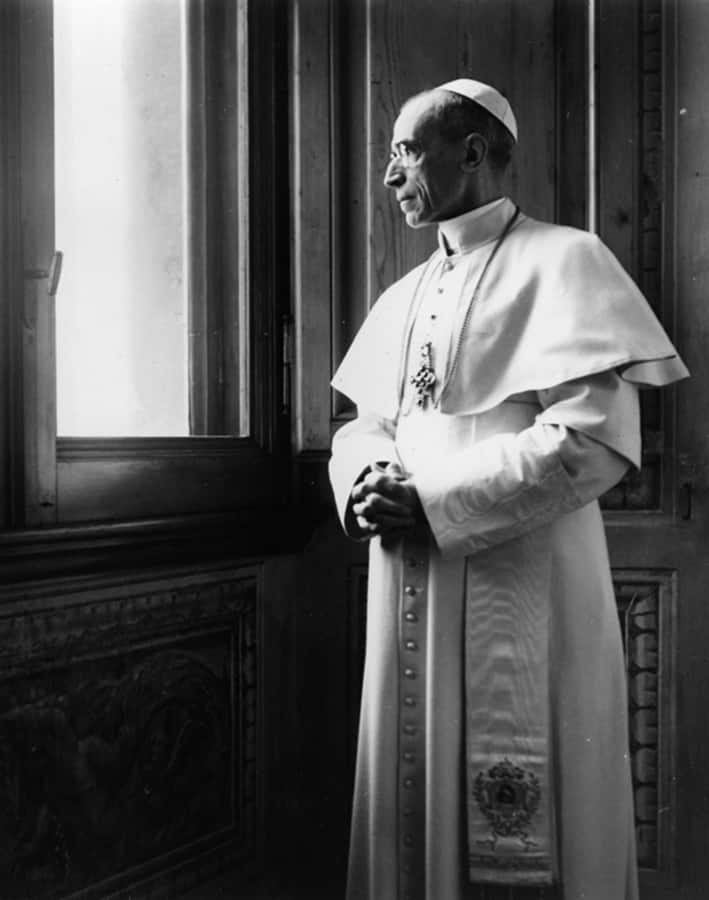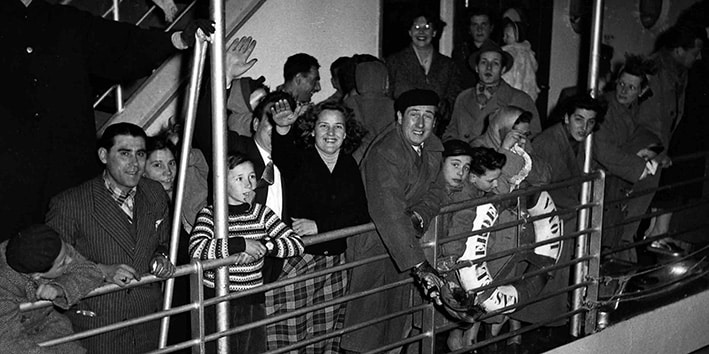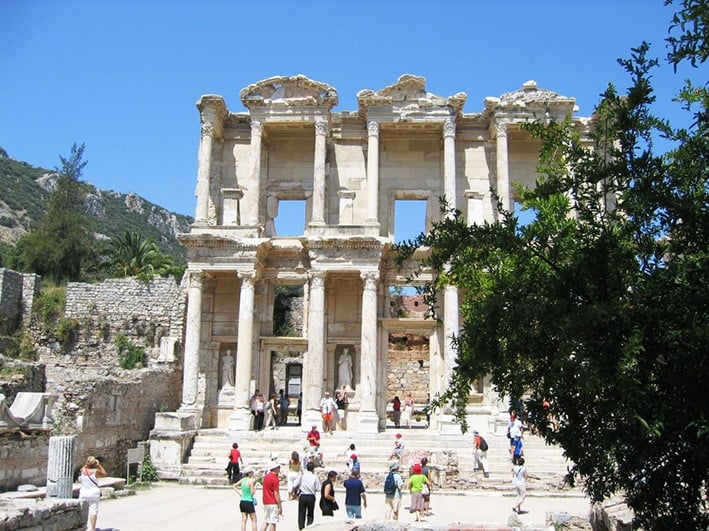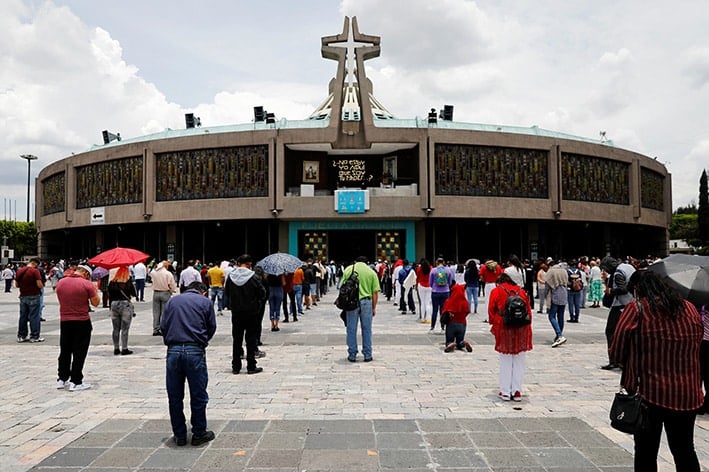
Seventy years ago, on the solemnity of All Saints, 1 November 1950, an immense crowd gathered in Saint Peter’s Square to witness a rare event, the solemn definition of a dogma. From his teaching chair, Pope Pius XII proclaimed the Assumption of the Blessed Virgin Mary as a truth to be believed by all the faithful.
He had chosen this splendid event to be the high moment of the Holy Year 1950, which had brought great numbers of pilgrims to Rome. At a time when travel was difficult and people had few resources, the year was a surprising success. The Church was able to shine some light of hope into the unsettled and shabby years that had followed the Second World War.
As a child, growing up in inner-Melbourne, I can just remember that year and somehow the color “grey” always comes to mind. Migrants were arriving from battered Europe, bringing stories of struggle and suffering, memories that cried out for healing. The world needed hope so the Pope who had steered the Church through the war years turned to the woman he loved, she who is “our life, our sweetness and our hope”.
Having consulted all the bishops of the Church, Pope Pius exercised his Petrine Office. Preserved by the Holy Spirit from falling into error, he taught that: “Mary, the immaculate perpetually virginal Mother of God, after the completion of her earthly life, was assumed body and soul into the glory of heaven.”

Scripture and Tradition
There is no record of Mary’s Assumption in the Sacred Scriptures. In the Gospel of Saint John she stands at the cross (John 19: 25-27) and Saint Luke records her prayerful presence waiting for Pentecost (Acts 1:14). Then there is silence, apart from the mysterious vision of the woman “clothed with the sun” in Revelation 12. But, the Second Vatican Council affirms that the Word of God does not come to us in the Bible alone, rather both in the Scriptures and Tradition (cf. Dei Verbum, 9).
We turn to Sacred Tradition for the sources behind the Church’s authoritative teaching that Mary was taken body and soul into the glory of heaven. The history of the doctrine of the Assumption is the path that leads to the dogmatic definition of 1950.
In Munificentissimus Deus, the document containing the definition, Pope Pius XII referred back to affirmations of the Assumption by Eastern Church Fathers. The celebration of a “dormition” or “falling asleep” of the Virgin goes back to the early centuries of the Christian East and this feast is still celebrated by Eastern Christians, Catholics and Orthodox. The word “dormition” was gradually replaced by “assumption”, her being taken up to heaven.
In Europe from medieval times, the Assumption was celebrated as the Summer feast of Our Lady. Churches were dedicated under the title “assumption” and artists depicted the event, culminating in baroque imagery replete with angels, cherubs and pastel clouds. In whatever way artists tried to depict it, Christians of East and West just took the doctrine for granted. While the faithful believed in the Assumption, theologians debated the details. Requests kept coming to Rome for a definition. In 1950, by defining the dogma the Pope provided precision about what the Church means by “assumed into heaven”.
The glory of the body-soul
What needs to be made clear is that the Church is not just teaching something “symbolic” or “spiritual”, a nice thought about Mary’s soul going to heaven. What is taught is that her material body was raised into the glory of heaven together with her immortal soul. To simplify it, Mary already enjoys a total resurrection. She follows her Son who has given his Mother the first share in his own bodily Resurrection.
We obviously set aside crude imagery of Mary flying through the sky. Her assumption is not her ascension, rather Christ’s gift of her resurrection. She passed directly into the eternal dimension of heaven. I would suggest that the fifth glorious mystery, celebrating her triumph as Queen of Heaven, runs parallel to Christ’s glorious royal ascension.
Applied to Jesus and Mary, the word “glorious” is not just poetic. It is doctrinal, drawn from the rich concept of “glory” that runs through both the Hebrew and Christian Scriptures, echoed in liturgy and prayer.
What needs to be made clear is that the Church is not just teaching something “symbolic” or “spiritual”, What is taught is that her material body was raised into the glory of heaven together with her immortal soul
You and I will become “glorious” when we are immersed in the blazing beauty and splendor of God forever, bathed in his glorious “light eternal”. Saint Paul expounded this mystery of the resurrection body: that our mortal bodies will be changed “in an instant”, raised in glory and “clothed with immortality” (Cf. 1 Corinthians 15: 35-58). This is why the most ancient prayer to Mary, the Sub Tuum, greets her as “glorious”.
Ecumenical questions
My late father, an Anglican vicar, strongly defended the Assumption. He would say, “Well, if Our Lady is not in heaven, where is she?” adding “and the first person Christ would call to share in his resurrection would be his own mother.”
Unfortunately, other Christians were less than enthusiastic about the new dogma. The Orthodox said that they believed in the Assumption anyway and did not need a Pope to teach them. Protestants said that it was not true because it is not in the Bible. Catholics set out to defend the dogma, particularly as an example of the exercise of papal infallibility.
Indicating some Biblical parallels of bodily assumptions may be useful when speaking to bible Christians, for example, Elijah was taken up to heaven in a chariot of fire in 2 Kings 2:11. But that will cut little ice with modernists who do not believe in chariots of fire, who have problems with heaven and may even quibble over whether Elijah ever existed! One way of gently influencing this kind of objector might be to point to the providential timeliness of the definition of this dogma and to focus on the value of the human body.
However, modernists also have problems with the body. I discovered that over forty years ago, not long after the Council, when some strange theology was circulating about Christ’s Resurrection not being “bodily” or “physical”, rather “spiritual”. Rome had to intervene to correct these errors so the Catechism of the Catholic Church 639-647 affirms the concrete nature of his Resurrection. But, we keep coming back to the body.
The body, life and death
Pope Pius XII proclaimed the dogma in 1950, only five years after the horrors of the Second World War – the Holocaust, Coventry and Dresden, Hiroshima and Nagasaki, that is, just after an era of the unparalleled destruction of the bodies of millions of innocent men, women and children. It was a time when human bodies had been scorned, treated like trash, to a degree unparalleled in history.

It was also a time when challenging questions of life, death and eternity were raised , still haunting our 21st century, resonating in different ways during the gloomy year of the COVID crisis. We sense that the body is so vulnerable. It carries our mortality, our human frailty and suffering. Yet the body contains our unique identities and largely sets our role in life.
We are not meant either to adore or to hate the body. Rather. we are called to respect and care for it, for we are embodied souls, or “ensouled” bodies, created in the beautiful divine image and our destiny will involve “the resurrection of the body”, as we profess in the creeds. But, there was also something unique about Mary’s body.
Her holy body
The Assumption affirms Mary’s Immaculate Conception, that the mortal remains of the Immaculate One would “not see corruption”, that is, by decomposing in a tomb. In his apostolic preaching at Pentecost, Saint Peter used this reference from Psalm 15:10 to proclaim the physical Resurrection of Jesus Christ (cf. Acts 2: 27). The preface of the Mass for the Assumption praises God the Father: “rightly you would not allow her to see the corruption of the tomb since from her own body she marvellously brought forth your Incarnate Son, the Author of life.”
However, we need to reflect on the purpose of her Immaculate Conception. Her body is sacred because only in this virginal body, in time and in a specific place, the sinless maiden of Nazareth bore the Son of God. By honoring Mary, the “all holy one”, panhagia, as the unique “God-bearer”, Theotokos, the Assumption brings us back to her greatest title. She is the “Mother of God”, the expression of her identity, her predestined role and purpose in the history of our salvation, as taught at the Council of Ephesus in 431.
But did Mary die?
An interesting aspect of the definition of the dogma in 1950 is that the Church has left open the question of whether Mary actually died. This is why Pope Pius used nuanced language in the definition: “after the completion of her earthly life”.
“Dormition” or “falling asleep” is also a gentle term, found in the Greek word for the holy death of Saint Stephen (Acts 7:60). Saint Paul describes the dead as “having fallen asleep in Christ” (1 Corinthians 15:18), echoed in the ancient prayer for “those who sleep in Christ” in Eucharistic Prayer 1. But, sleep is only a symbolic term for death because souls do not really “sleep”.
One school of thought says that Mary did not die because death is caused by original sin and she was created free from original sin. But the prevailing view among Mariologists is that she did die, because her sinless Son suffered death, and that she was buried, either at Ephesus, where she lived with Saint John, or at Jerusalem, where a noble church marks her tomb. The legendary accounts of her dormition/assumption all concur with this latter view.
No relics here
Associated with the Assumption is an unusual fact. Nowhere does anyone claim, nor it seems has anyone ever claimed, to have relics of the body of the Blessed Virgin. There are supposed relics of her veil, her belt, etc. but no first class relics of flesh or bone.
This is remarkable in itself if we go back to the early Christian centuries, when there was such an eager quest for the bodies of apostles, saints and martyrs, when churches and altars were built over them and holy remains, entire or in parts, were transported (“translated”) here and there. In Ephesus they built a great church in honor of Mary the Mother of God, but it contained no relics.

“He has exalted the lowly”
However, Mary’s celestial glory should never conceal her humble origins, her simplicity as the poor woman of Nazareth. In her Magnificat she proclaims her own destiny and God’s liberating plan for the little ones of the world. God has done great things for her – and he, the God of justice, has exalted the lowly, humbled the rich and proud and fed the poor well (cf. Luke 1:46-55).
In the charter of her Magnificat, Mary’s Assumption is the triumph of the first among those millions who suffer and yet believe. The woman of faith who consented to be the Mother of God was a hunted refugee, the poor widow who suffered even at her Son’s cross, and she was rightly hailed as the “Queen of seven swords” by G. K. Chesterton.
As I have seen in the great crowds that come every day to Mary’s shrine at Guadalupe in Mexico, the “Church of the poor” eagerly gathers at her images and shrines. The afflicted, the sad and the oppressed seek and find comfort in her care, and much more, they find the hope of glory revealed in her Assumption. Here is “one of our own” in glory. Pope Francis, who has a tender devotion to Mary, knows this for he has seen it again and again. He calls us to be a Church that reaches out to the poor and marginalized, for these are not only Mary’s cherished children, but her sisters and brothers.

Our Hope of Glory
Therefore the heavenly glory of Mary does not cut her off from us, rather it becomes the way she can be so close to us now, as our tender Mother. The Second Vatican Council beautifully proclaimed her motherhood: “Taken up to heaven, she did not lay aside this saving office but by her manifold intercession continues to bring us the gifts of eternal salvation.” (Lumen Gentium, 62). The Assumption therefore illuminates her title conferred by Saint Paul VI, “Mother of the Church”.
As the first Christian to share fully in the Paschal Mystery of her Son’s Resurrection, Mary became a great sign of hope for all Christians. Where she is, we hope to be, raised through the General Resurrection into the heavenly glory of the Church, the final coming of Christ’s Kingdom. So the dogma is just as much about us as it is about Mary.
Devotion to our glorious Mother enriches that essential dimension of Christian living, the virtue of hope. In these gloomy times, hope is the light directing our gaze beyond passing COVID woes into Gods’ future. Our hope of eternal life is based on faith in the bodily Resurrection of the Lord Jesus, reflected in what he did for his beloved Mother.
The liturgy gives us a beautiful description of this encouraging dogma in the preface of the Assumption, where Mary is celebrated as “the beginning and image of your Church’s coming to perfection and a sign of sure hope and comfort to your pilgrim people”.
Sub Tuum
This short prayer to the Glorious Virgin Mary has been prayed by Christians in troubled times since the Third Century.
We fly to your protection, O Holy Mother of God;
despise not our petitions in our hour of need,
but deliver us always from all dangers,
O glorious and blessed Virgin Mary. Amen
Related
